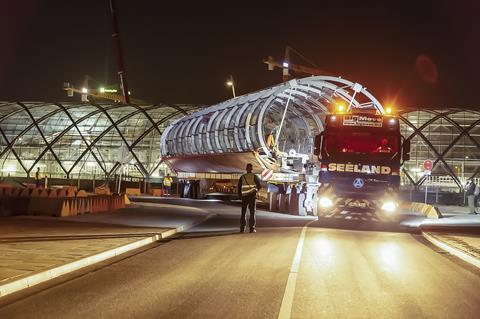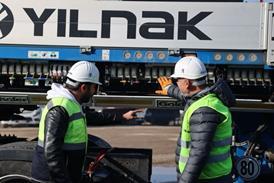Last week, a high-level debate the European Parliament in Brussels shone a light on plans for a radical overhaul of the fragmented European regulations governing heavy and abnormal transport.

Organised by the European association of abnormal road transport and mobile cranes (ESTA), the debate was held on the eve of the publication of the European Commission’s Military Mobility Package, which proposed the creation of abnormal transport corridors for both military and industrial use and added further momentum to the reform process.
The event was hosted by Polish MEPs Elżbieta Łukacijewska and Dariusz Joński – both members of the European Parliament’s Transport and Tourism Committee – and there were important contributions and support from MEPs, senior European Commission officials, the Council and a wide range of companies and organisations from across Europe.
Opening the discussions, Joński said: “It is so important to keep the heavy transport sector competitive and supported with the infrastructure it needs. Today, we have a unique opportunity to improve the function and operation of the regulations governing abnormal transport.”
The keynote presentation was given by ESTA director Ton Klijn who set out ESTA’s four key priorities for the military mobility and abnormal transport agendas: implementing the weights and dimensions directive’s requirements for abnormal transports; aligning permitting procedures with NATO urgency levels; developing abnormal transport corridors; and ensuring corridors are available for all abnormal transports.
Klijn was supported by Marinka Nooteboom, ceo of the trailer manufacturer Nooteboom, and Lukasz Chwalczuk from ESTA member OSPTN, the Polish heavy transport association. Other senior speakers included Filip-Alexandru Negreanu-Arboreanu from DG Move and Nicolas Lyrakides from the Permanent Representation of Cyprus to the EU, whose country will take over the Council Presidency from Denmark in January next year.
Both Negreanu-Arboreanu and Lyrakides were optimistic of rapid progress, both on military mobility and the proposed revisions to the weights and dimensions directive, which contains many measures ESTA has been requesting for many years.
Lyrakides said that Cyprus would continue the momentum of the Danish Presidency and hoped that agreement will soon be reached on the revision to the directive which will allow Trilogue negotiations to begin in early 2026.
These negotiations involve a final round of discussions between the Commission, the Parliament and the Council representing the governments of the member states, after which a final text is sent to the Parliament and Council for formal adoption.

Klijn said: “The high-level debate was a considerable success, and it confirmed the positive and growing level of support for our industry and its requirements among Europe’s politicians, regulators and officials.”
The publication of the EU’s Military Mobility Package was also deemed a success by ESTA, as it contains measures to streamline and coordinate national regulations, boost investment in essential infrastructure and drive change through the creation of new pan-European bodies such as the Military Mobility Transport Group.
It also backs the development of pan-European heavy transport corridors to support both Europe’s armed forces and industry.
The measures contained in the package will complement the planned revisions to the weights and dimensions directive. Taken together, ESTA believes that the two packages of regulatory reform could lead to dramatic improvements in the speed and efficiency of heavy and abnormal transports throughout Europe – with massive benefits to both Europe’s military operations and industries.
Klijn said: “The Military Mobility Package contains measures that ESTA has been campaigning on for many years – notably infrastructure investment in specific transport corridors that can be used for both military and industrial purposes.
“We are also optimistic that some of the permitting and regulatory changes that the package contains will lead to improved harmonised standards and technological improvements – such as agreements on common digital permitting systems.”
The measures in the 115-page military mobility document include: the establishment of a Military Mobility Transport Group; investment in four ‘hotspot’ priority mobility corridors containing more than 500 projects for both military and industrial use; additional spending for infrastructure projects; the creation of a new European Military Mobility Enhanced Response System (EMERS) for fast-track permit procedures and priority access to infrastructure; streamlined Customs and transport formalities; and measures to protect strategic infrastructure with improved cybersecurity and energy security.
The EU’s Trans-European Transport Network will oversee delivery of the infrastructure projects, while the new Military Mobility Transport Group will coordinate regulatory work. Each country will also appoint a national coordinator for military transport.
The planned new regulations contained in the package will now be presented to the Council and the European Parliament for adoption.
















